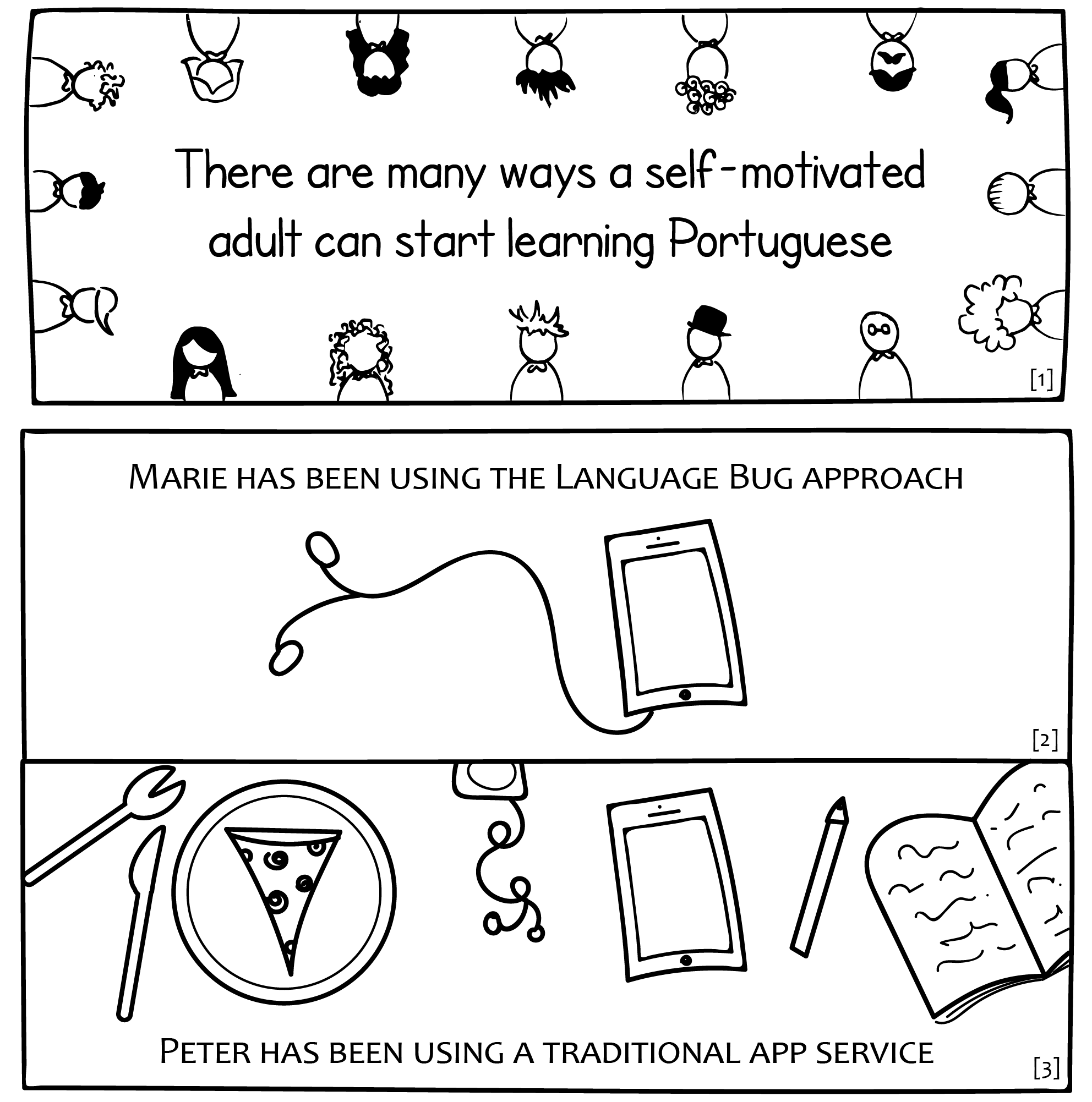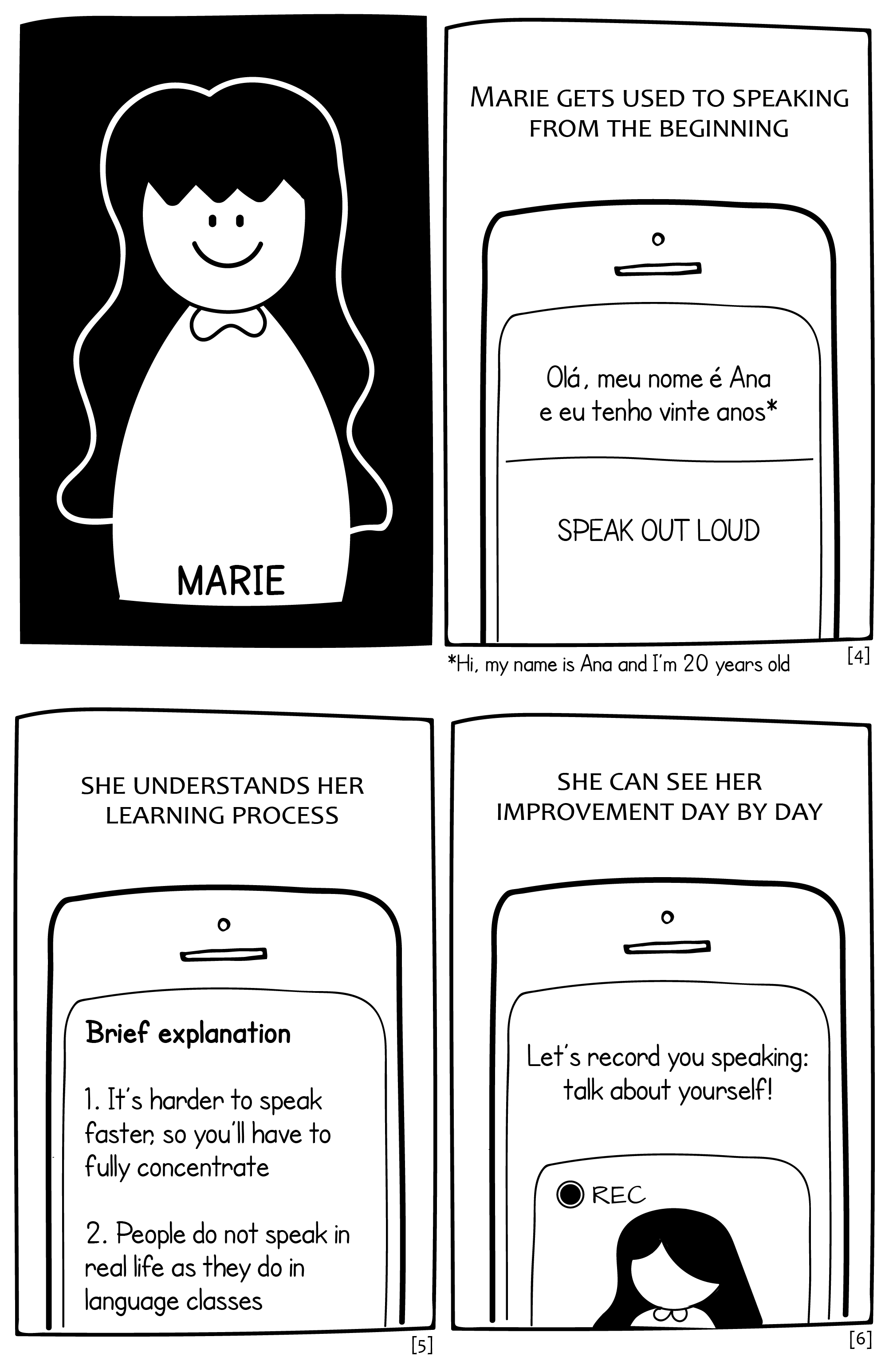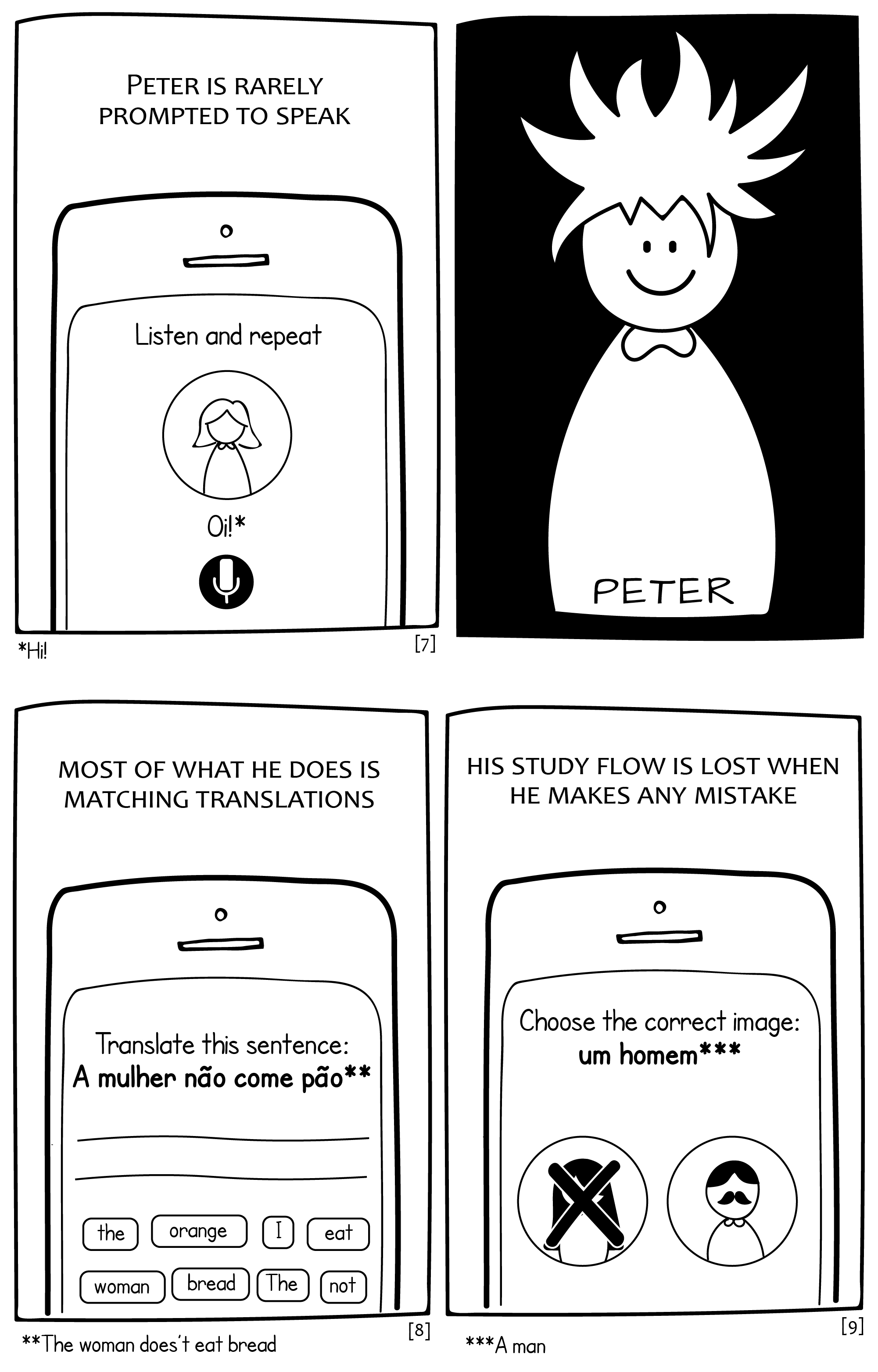Storyboard
Annotations
[1] As explained in the Target Learners section, according to the conceptual framework of Andragogy, adult learners are identified as self-motivated and self-directed (Knowles, 1989; Merriam, 2001).
[2] [3] Context: 30% of American smartphone owners check their phones even when at a meal (Lookout Mobile Security, n.d.), but LanguageBug is designed to be challenging and to require complete concentration.
As described in the Design Rationale section:
[4] LanguageBug focuses on helping language learners build up their speaking skills. Exercises are intensive speaking practices that prompt learners to produce utterances in the target language.
[5] Learners can access the rationale behind each Principle and each Exercise within LanguageBug. This metacognitive information helps them reflect on their approach to language learning.
[6] The self-assessment video feature is designed to help learners notice their progress. As their speaking skills increase after each practice, they can see their evolution video after video.
As described in the Landscape Audit section:
[7] Speaking: most language learning applications rarely prompt learners to speak. Speech prompts are also limited to simple sentences or even single words, resulting in reduced progress in speaking.
[8] Rather than prompting users to speak, these language learning apps are mostly based on matching mini-games. Learners merely tap on words to find appropriate translations for (usually irrelevant) sentences.
[9] Right/Wrong: after each wrong answer, learners lose a few seconds correcting and re-submitting their answers. Their working memories stop dealing with language learning and begin to operate the app.
Expected results
[10] Learners using LanguageBug speak several times the same utterances. After a few practices, they will be able to repeat those utterances by heart and assertively, even in a social context.
[11] Learners using other apps build up skills that mostly useful within those apps. In a social context, it will be hard for them to express what they have learned in a timely way to engage in a conversation.
[12] Self-assessment videos make learners aware of their progress. As a result, they will become more motivated (Halvorson, 2013, p. 23) and are likely to continue learning their target languages on LanguageBug.



